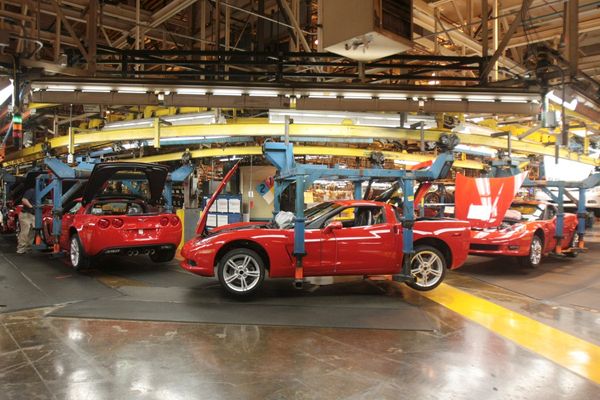Tesla used to be a magnificent S&P 500 stock every investor wanted to own — now it's a liability. Deleting Tesla from your portfolio, though, is possible.
Talk about a short circuit. Shares of the electric-car company managed by billionaire Elon Musk are down more than 37% just this year. That makes it the second-worst stock in the S&P 500, following Globe Life, which is off 48%.
Avoiding Tesla stock, though, is tricky as it's still valued at a commanding $500 billion. The stock is still a 1% weighting in the S&P 500, which places greater weights on stocks with high market values. Tesla stock is about double that weighting in the Invesco QQQ.
But Tesla holds an even loftier 12% position in the $19.3=billion-in-assets Consumer Discretionary Select Sector SPDR. And it's a hefty position in some well-known ETFs, too. ARK Innovation, with $6.5 billion in assets, plows roughly 10% of its portfolio in Tesla stock.
"There are ways to reduce your exposure to a single large-cap stock like Tesla, but it's not simple," said Todd Rosenbluth, head of research at Vetta Fi.
Shift Your Sectors
If you own the consumer discretionary sector, your Tesla risk is relatively high. If you want to reduce your Tesla exposure but still stay exposed to the sector, a shift might make sense.
The Invesco S&P 500 Equal Weight Consumer Discretionary ETF maintains roughly 2% positions in all its holdings, regardless of company size, Rosenbluth says. Owning RSPD instead of XLY cuts your risk to Tesla by about 10 percentage points and favors "more moderately sized consumer stocks like Domino's Pizza and Hasbro. There is a cost, though. "You also reduce your exposure to Amazon.com, which is 25% of XLY," he said.
Getting More Creative to Cut Out Tesla
Another option is using single-stock bearish ETFs. These ETFs use options strategies to counteract moves in individual stocks.
For instance, the Direxion Daily Tesla Bear 1X ETF rises in value when Tesla shares fall on a daily basis.
"TSLS could be used tactically and paired with the S&P 500 ETFs to isolate that one company," Rosenbluth said. "However, investing in inverse ETFs comes with elevated risks since stocks can go up for longer periods." And the fee is steep, weighing in at 1.07% annually.
Another bold approach is the AXS Short Innovation Daily ETF. This ETF rises when ARK Innovation, a big Tesla stock owner, sinks. The ETF has returned more than 18% this year so far, says Morningstar Direct. Just know the fee is high: 0.75% annually. And if ARK Innovation rallies, as it tends to without warning, you'll lose money.
A less extreme strategy is to use covered-call ETFs tied to Tesla. This strategy, followed by Kurv Yield Premium Strategy Tesla, collects options income from its position in Tesla.
This is a safer approach to an inverse ETF. You are at least getting paid to hold onto the stock. "You could also use covered-call ETFs tied to Tesla like TSLP, which is a more defensive substitute because you earn income from the options," Rosenbluth said. But again, the fees are high: 0.99% annually.
Don't Worry About It
Just know that if you simply own the S&P 500, your exposure to Tesla's falling shares is minimal. In fact, the beauty of S&P 500 index funds is that your single-stock risk isn't worth worrying about.
"One of the benefits of using (S&P 500) ETFs ... is diversification," Rosenbluth said. "TSLA represents just 1% of the S&P 500 ETFs and is offset by companies with stronger fundamentals."
Magnificent No More
Tesla is one of the worst S&P 500 stocks this year.
| Company | Ticker | YTD change |
|---|---|---|
| Globe Life | -47.6% | |
| Tesla | -37.1% | |
| Boeing | -34.9% | |
| Charter Communications | -33.5% | |
| Lululemon Athletica | -32.4% | |
| Walgreens Boots Alliance | -32.4% | |
| MarketAxess Holdings | -30.8% | |
| Humana | -29.6% | |
| Intel | -29.1% | |
| Warner Bros. Discovery | -27.3% |










